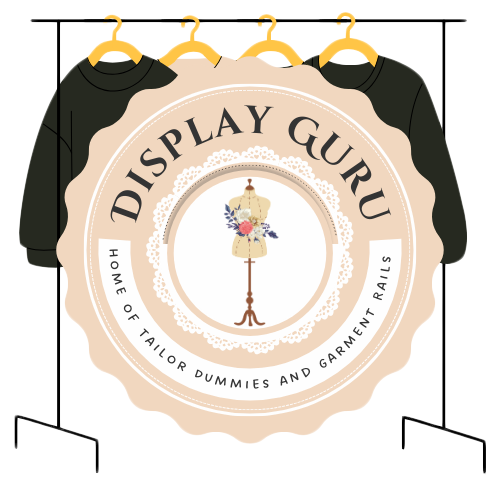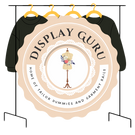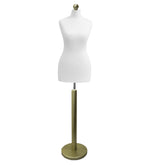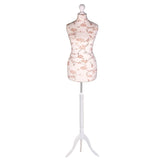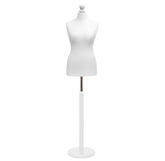Find Your Perfect Sewing and Cutting Table
Let's be honest, a proper sewing and cutting table isn't just a piece of furniture. It's a serious upgrade for your craft, one that boosts your efficiency, comfort, and the precision of your work. It’s about finally moving your projects off the dining room table and into a space that’s truly designed for creating. This isn't just an indulgence; it’s a move that respects both your hobby and your body.
Why Your Workspace Deserves a Dedicated Table
For so many of us, graduating to a purpose-built sewing and cutting table is a real turning point. It’s the moment your passion for sewing finally gets the physical space it needs to flourish. The benefits go far beyond just having a bit more room—a dedicated table can genuinely reshape your entire creative process.
Think about it: no more wrestling with large pattern pieces on a small surface, constantly shifting and readjusting the fabric. A large, stable table means your cuts are accurate right from the get-go, preventing those subtle distortions that creep in when you’re working on an uneven or undersized space. Getting that initial cut right saves a mountain of time and frustration later on.
Comfort and Creative Focus
We’ve all been there—working at the wrong height is a one-way ticket to backache and shoulder strain. Most dining tables are simply too low for cutting fabric while standing, forcing you into an uncomfortable hunch. A proper sewing and cutting table, however, is built with ergonomics in mind. It lets you work for hours without that familiar ache setting in.
When your workspace is organised and comfortable, you're not fighting against your environment. You can pour all that energy directly into your project, which always leads to better results and a far more enjoyable process.
This shift is more relevant than ever here in the UK, where the love for sewing has grown from a niche hobby into a significant market. The UK's sewing machine market was valued at around USD 116.7 million in 2024, and it's set to keep growing. This tells us that more people are investing seriously in their craft, making purpose-built furniture like a dedicated cutting table a logical and valuable next step. You can find more detail on this trend in the UK sewing market report on Grand View Research.
Boosting Efficiency and Organisation
A dedicated table often comes with smart, built-in storage or is designed to work perfectly with other organisational systems. This means your essential tools—rotary cutters, rulers, scissors, and pins—are always within arm's reach but neatly tucked away, leaving your main surface clear.
A clutter-free workspace streamlines your entire workflow, letting you move seamlessly from cutting to stitching without a pause. Ultimately, upgrading your table is about building a solid foundation for better work, greater comfort, and more creative joy.
Matching a Table to Your Sewing Style
Choosing a sewing and cutting table isn't about simply picking the biggest or most expensive one you can find. It’s a personal decision, one that should reflect how you actually work. Your ideal setup needs to align with your creative habits, the kinds of projects you gravitate towards, and the practical reality of your space. A quilter wrangling huge swathes of fabric has completely different needs from someone sewing children’s clothes in a small flat.
Think about the projects you tackle most often. If you’re frequently working with large bolts of fabric for quilts or dresses, a substantial, dedicated cutting table is a game-changer. These tables give you the uninterrupted surface area you need to make accurate, single-pass cuts with a rotary cutter, which is crucial for preventing fabric from shifting. For anyone making clothes, that kind of precision is vital when you're trying to align pattern pieces perfectly.
On the other hand, if your projects are on the smaller side—maybe you make accessories or enjoy tailoring existing garments—a more compact sewing cabinet with a fold-out cutting wing could be just the ticket. These clever pieces of furniture offer a generous workspace when you need it but can be folded down and tucked away. That’s a huge plus in many UK homes where space is a real luxury.
This visual guide highlights the real, tangible benefits that the right table can bring to your creative process.
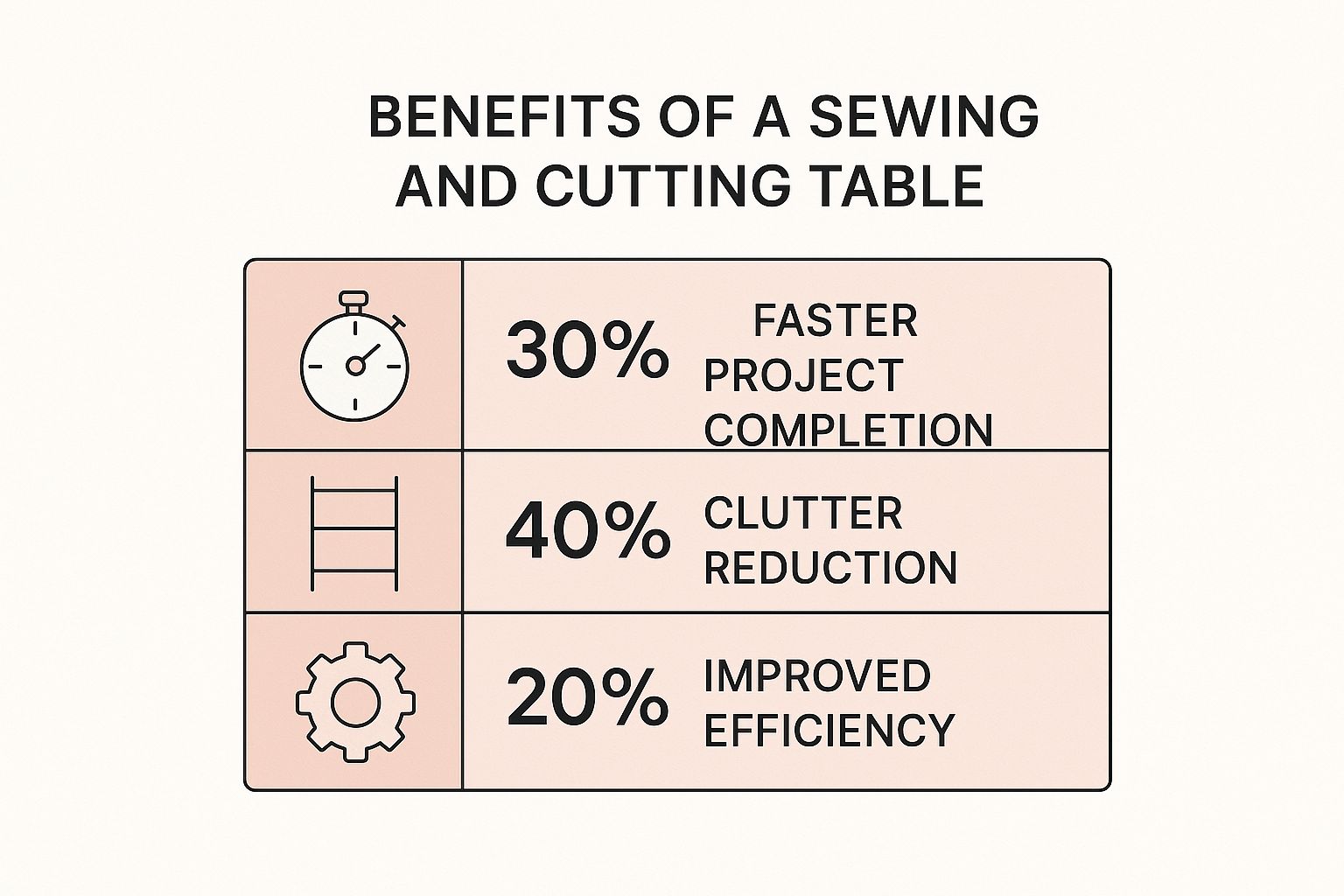
As you can see, the advantages add up quickly, helping you finish projects faster and create a much more organised, efficient sewing room.
Comparing Sewing and Cutting Table Options
To help you decide, let's look at some of the most common types of tables available. Each has its own set of strengths and weaknesses, making them better suited for different kinds of sewists and spaces.
| Table Type | Best For | Key Advantages | Potential Drawbacks |
|---|---|---|---|
| Dedicated Cutting Table | Serious quilters and dressmakers with a dedicated sewing space. | Large, stable surface for precise rotary cutting. Often at a comfortable standing height. | Can be very large and bulky. Often lacks integrated storage. |
| Sewing Cabinet with Extensions | Hobbyists with multi-purpose rooms who need flexibility. | Space-saving design. Combines sewing machine storage with a fold-out cutting area. | Cutting surface may be smaller or less stable than a dedicated table. |
| Adjustable Height Table | Sewists who experience back pain or switch between sitting and standing. | Ergonomic benefits. Can be set to the perfect height for both cutting and sewing. | Can be more expensive. Mechanical parts require maintenance. |
| DIY Custom Table | Sewists on a budget or with specific space constraints. | Fully customisable to your exact size and storage needs. Very cost-effective. | Requires time and effort to design and build. Stability depends on your skill. |
Ultimately, the best choice hinges on what you make and where you make it. A large, dedicated table is fantastic if you have the room, but a clever cabinet might be far more practical for most people.
What to Look For in a Table
Beyond the overall size and type, a few key features really separate a good table from a frustrating one. First and foremost is stability. There's nothing worse than a wobbly table, and it can be downright dangerous when you're using sharp rotary cutters or scissors. Always check for sturdy legs, a solid frame, and locking castors if it has wheels.
Storage is the next big thing to consider. Integrated drawers, shelves, or cubbies can absolutely transform your sewing organisation. Having your threads, bobbins, and notions right where you need them saves so much time and frustration. Some high-end tables even come with a recessed lift mechanism, which lets your sewing machine drop down to sit flush with the tabletop for a seamless, flatbed sewing experience.
Finding the Right Fit for Your Budget and Space
Your budget will obviously play a big role, but try to think of your table as a long-term investment in your craft. A good table can last for decades. Fortunately, there are great options at almost every price point.
The most important thing to remember is that the "best" table is the one you'll actually use. A giant, professional-grade table that makes your room feel cramped is far less useful than a smaller, well-organised station that fits your home and workflow perfectly.
Before you make a final decision, take a moment to visualise your entire process. If you specialise in custom-fit clothing, for example, you’ll need enough space not just for cutting fabric but also for your dress form. Knowing how to take body measurements for clothes is a core skill, and your workspace needs to comfortably accommodate that part of the process too.
Getting the Ergonomics and Dimensions Right
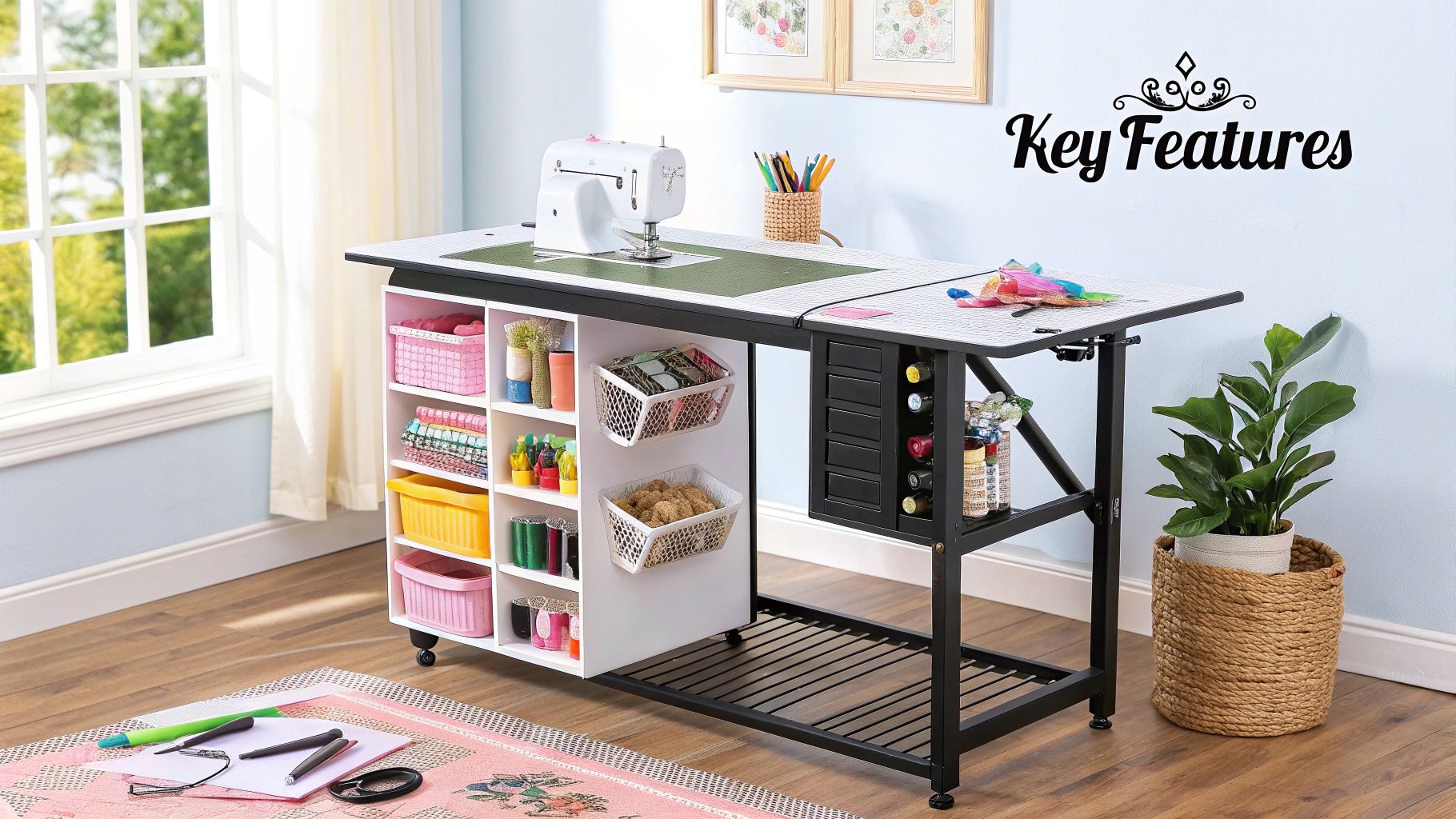
An uncomfortable workspace is more than just a minor annoyance. It’s a direct obstacle to your creativity and, over time, can lead to genuine physical strain. If you want to build a truly functional and enjoyable creative space, getting the ergonomics and dimensions of your sewing and cutting table right from the start is one of the most important things you can do.
It’s all about creating a setup that supports your body, whether you’re sitting for hours of detailed stitching or standing for a long cutting session. The right height stops you from hunching over—a major cause of back and shoulder pain. Likewise, a surface that’s too high will strain your arms and wrists. The goal is to find that sweet spot where your posture feels neutral and relaxed, so you can lose yourself in your project.
Finding Your Ideal Table Height
The perfect table height is completely personal. It depends on your own height and whether you spend more time sitting or standing. There's no magic one-size-fits-all number, but there are some excellent guidelines to help you find what works for you.
If you’re cutting fabric while standing, a good rule of thumb is to have the tabletop at hip level. This position allows you to apply firm, even pressure with a rotary cutter without having to lean over. For sewing while seated, your table should be low enough that your feet rest flat on the floor and your forearms are parallel to it when your hands are on the machine.
- For Standing: Bend your elbow at a 90-degree angle. The ideal cutting surface is about 8-10 cm below your elbow.
- For Sitting: Adjust your chair so your knees are at a 90-degree angle. The table should then be high enough for your arms to rest comfortably without your shoulders shrugging up.
Here's a tip from experience: an adjustable-height table can be a fantastic investment. It lets you switch seamlessly between a comfortable sitting height for machine work and a proper standing height for cutting, giving you the best of both worlds.
Sizing Your Table for Your Projects
Once you’ve figured out the height, the next thing to consider is the surface area. The size of your sewing and cutting table should really be decided by the scale of your projects and, of course, the size of your room.
A quilter, for instance, needs a much larger surface than someone who makes baby clothes. You need enough space to lay out your biggest pattern pieces or a full width of fabric without it dangling awkwardly off the edges. A standard bolt of fabric is typically around 44 inches (112 cm) wide, so a table with at least that much depth is a brilliant starting point for most dressmakers and quilters.
This need for proper equipment reflects a wider trend. Here in the UK, we've seen a steady rise in sewing machine imports between 2017 and 2023, which points to a strong and growing community of crafters needing good quality furniture to support their hobby. This trend really reinforces the need for well-designed tables to support the nation's sewists.
Even if you’re tight on space, the right table can make a world of difference. For a smaller room, look for tables with drop-leaf extensions or gate legs. These give you a large work surface when you need it but fold down to reclaim your floor space when you're done. For more tips on making a compact area work for you, have a look at our guide on small sewing space ideas. A clever setup can make any workspace feel expansive and productive, no matter its footprint.
Bringing Your New Creative Hub to Life
Now that your new sewing and cutting table is in place, you’ve got a brilliant opportunity to design a truly efficient creative space from the ground up. This is your chance to break away from old, clunky habits and build a workflow where everything has its own logical home. The real goal here is to make the journey from cutting your fabric to stitching it together completely seamless, cutting down on wasted time and letting you focus on what you love.
Think of this new setup as more than just a table—it’s the very heart of your sewing room. By putting some thought into how you arrange your tools and materials, you can elevate your space from simply organised to genuinely productive. It's all about making every single movement count.
Mapping Out Your Work Zones
First things first, let’s establish clear zones for your main activities: cutting, pressing, and sewing. Your new table naturally becomes the centrepiece of the cutting zone. This is where you’ll want to keep your rotary cutters, rulers, and pattern weights close at hand, ready to grab without a second thought.
A dedicated pressing station is just as vital. I’ve seen many sewists use a heat-resistant wool mat directly on their cutting table, which is great for space-saving. Others, myself included, prefer a separate ironing board. Whichever path you take, make sure your iron and any pressing tools are placed logically between your cutting and sewing areas. This creates a natural, flowing triangle of work.
A classic mistake I see is tools scattered all over the room. When you create distinct zones, you build muscle memory. Your hands will instinctively reach for the right tool, saving you precious seconds and mental energy on every single task.
Getting the Essentials Right: Lighting and Accessories
No cutting station is truly complete without a high-quality, self-healing cutting mat. My advice? Get one that covers as much of your table as you can. It protects your new surface from those inevitable stray cuts and lets you handle much larger pieces of fabric without constantly having to shift and realign everything.
Lighting is another non-negotiable. Bad lighting is a fast track to eye strain and, worse, inaccurate cuts. Try to position your main overhead light so it doesn't cast shadows from your body or sewing machine onto your work. A flexible task lamp that you can clamp onto the table and point exactly where you need it is a fantastic investment, ensuring your cutting lines are always crisp and clear.
If you're looking for more inspiration, there are countless clever sewing room ideas out there, from clever vertical storage to handy mobile carts that can completely change your space.
Smart Storage for a Clutter-Free Tabletop
A clear surface is key. Seriously. A cluttered table often leads to a cluttered mind and can really stifle creativity. The trick is to use the vertical space around you and bring in mobile storage to keep your most-used items accessible but neatly out of the way.
Here are a few practical solutions that have worked wonders for me and others:
- Pegboards: A brilliant way to hang up rulers, scissors, and rotary cutters so they're always visible and easy to grab.
- Mobile Carts: A small, wheeled cart is like a personal project assistant. You can load it up with all the specific fabric, thread, and notions for whatever you're currently making and just wheel it to wherever you need it.
- Drawer Dividers: These are a lifesaver for taming that "junk drawer" we all have. Use them to create neat compartments for threads, bobbins, pins, and all those other small but essential tools.
When you thoughtfully arrange these elements, your sewing and cutting table transforms from a simple piece of furniture into the command centre for all your creative projects.
Maintaining Your Table for a Lifetime of Use
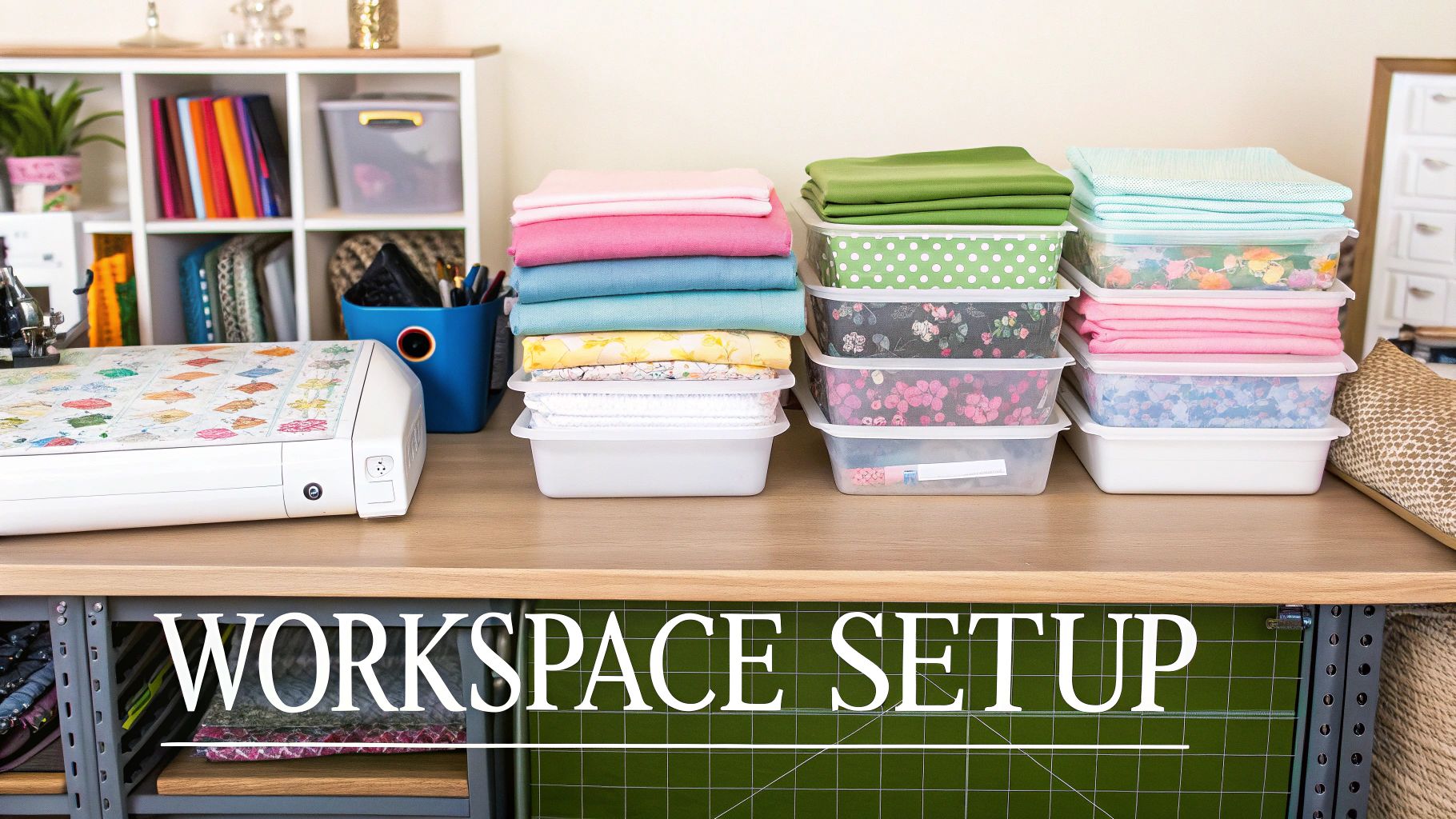
Think of your sewing and cutting table as a long-term investment in your craft. It’s more than just furniture; it's your creative partner. A bit of regular care will keep it in top shape, ensuring it remains a sturdy, reliable hub for all your projects. Honestly, good maintenance isn't about big, time-consuming jobs. It’s all about small, consistent habits.
A simple, regular clean is your first line of defence. Dust, lint, and stray threads have a knack for getting everywhere, but a quick wipe-down prevents them from building up on your work surface or getting into any moving parts. For most common laminate or melamine tops, a damp microfibre cloth is all it takes.
Caring for Different Table Surfaces
The type of surface your table has will really guide how you clean it. What's perfect for a durable laminate could easily spoil a beautiful solid wood top. Knowing how to handle the inevitable messes without causing damage is half the battle.
One of the most common frustrations is getting rid of that sticky residue left behind by fusible web or interfacing. If you have a laminate surface, try gently warming the spot with a hairdryer. This usually softens the gunk enough that you can scrape it off with a plastic scraper or even an old credit card. For any leftover tackiness, a bit of isopropyl alcohol on a cloth should do the trick.
Solid wood tables, however, need a much softer approach. Steer clear of any harsh chemical cleaners. Instead, a simple solution of wood-friendly soap and water is best—just be sure to wipe it completely dry afterwards. To keep the wood from drying out and looking its best, treat it with a quality furniture polish or wax from time to time.
Protecting Your Workspace from Damage
Let's be honest, our most-used tools—rotary cutters and sharp scissors—can be the biggest culprits when it comes to damaging a tabletop. This is precisely why a high-quality, self-healing cutting mat is an absolute must-have. It’s the essential buffer that absorbs every slice and score, keeping your table’s surface pristine.
A quick tip to make your cutting mat last: always store it flat, never rolled up. Keeping it flat on your table or hanging it from a clip prevents it from warping, which is crucial for getting those perfectly straight, precise cuts every time.
This need for precision isn't just a home-sewing concern. The global demand for fabric cutting tables is on the rise, driven by the textile industry's push for greater efficiency. This is leading to more advanced table designs across the board.
If your table has adjustable or folding parts, they'll appreciate a little attention too. The vibrations from your sewing machine can slowly loosen bolts and screws over time, so give them a quick check and tighten them if needed. A quick spray of silicone lubricant on the hinges or lift mechanisms will also keep everything moving smoothly and quietly.
By making these simple checks part of your routine, your sewing table will remain a strong, stable, and clean foundation for your creativity for years to come. After all, well-maintained tools and an organised space are the cornerstone of enjoyable sewing. If you’re looking to get the rest of your space in order, you might find our guide on sewing room storage ideas useful.
Common Questions About Sewing Tables
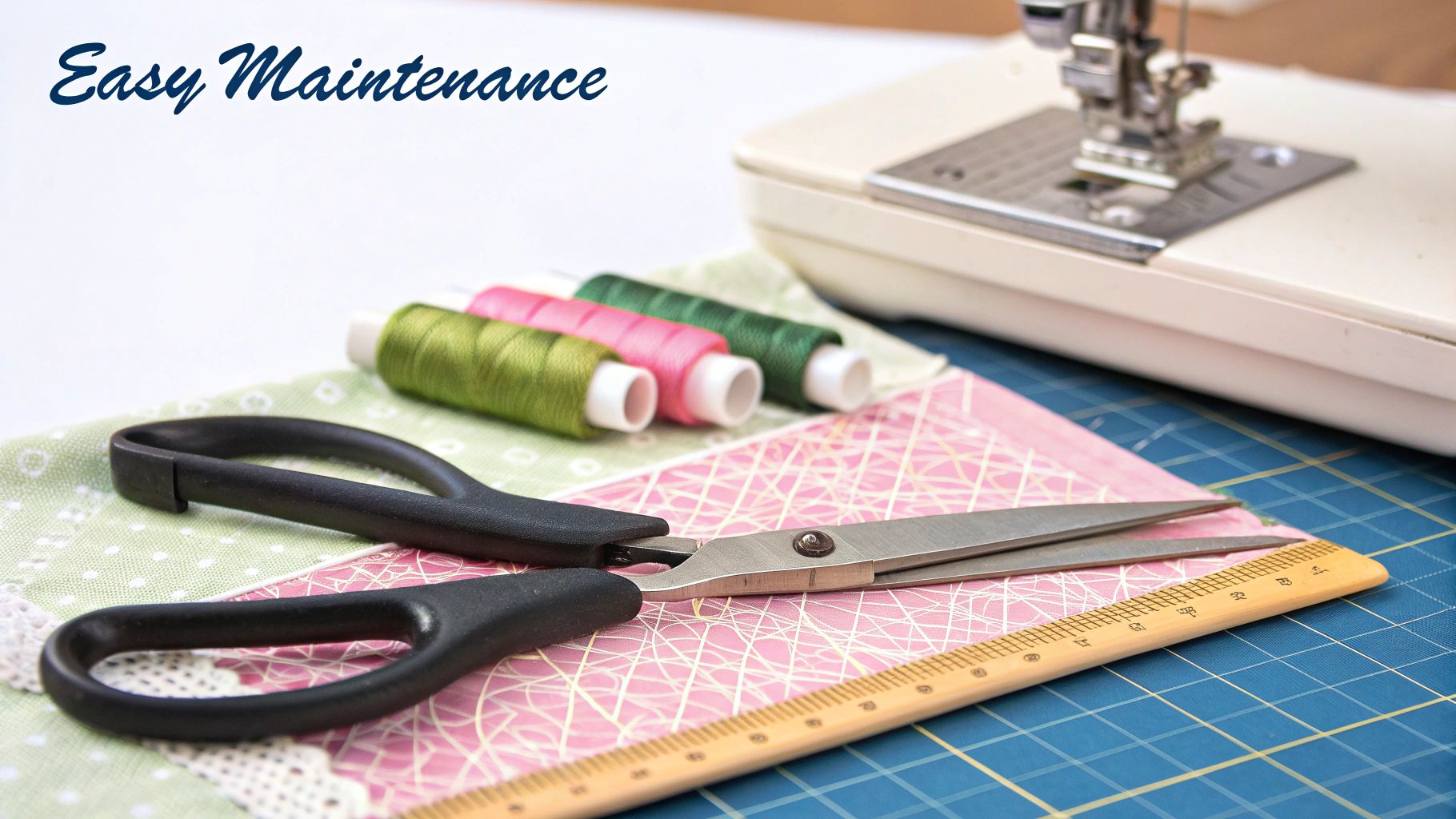
Choosing the right sewing and cutting table always brings up a few practical questions. I get asked these all the time, and getting the answers straight can make all the difference between buying a piece of furniture you love versus one that just gets in the way.
Let’s tackle some of the most common queries I hear from fellow sewists. These insights come from years of experience and are designed to clear up any doubts you might have.
Can I Really Use One Table for Both Sewing and Cutting?
Yes, you absolutely can, and it's what most of us with limited space do! The trick is to find a table designed for this exact purpose. You're looking for a clever combination: a large, uninterrupted surface for spreading out fabric, paired with features that cater to your sewing machine, like a recessed lift or just a really solid top.
A sewing cabinet with drop-leaf extensions is a classic example. When the leaves are down, it's a neat little sewing station. Pop them up, and you’ve suddenly got a huge cutting area. The non-negotiable feature here is stability. The table has to be heavy and sturdy enough to handle the vibrations of your machine at full tilt without wobbling, and also withstand the pressure you apply with a rotary cutter.
What’s the Best Surface Material for a Table?
The ideal material really comes down to your budget and how you work. Each one has its pros and cons.
- Laminate/Melamine: This is easily the most popular and practical choice. It’s tough, a breeze to wipe clean, and resists scratches and moisture well. Fabric glides over its smooth surface, which is a huge plus.
- Solid Wood: A gorgeous and incredibly sturdy option, but it does need a bit more TLC. It’s a premium choice that will last a lifetime if you look after it with regular polishing.
- Metal: You’ll often see metal frames on industrial-style or height-adjustable tables. They offer fantastic stability, usually paired with a top made from another material like laminate or butcher block.
Regardless of the surface you choose, a good self-healing cutting mat is an absolute must. It’s the single best way to protect your table from nicks and slices, and it gives you the perfect grip for your rotary cutter. Think of it as essential insurance for your tabletop.
Is an Adjustable Height Table Worth the Extra Money?
For a lot of sewists, including myself, an adjustable-height table is a total game-changer. Being able to move from a comfortable seated height for machine sewing to an ergonomic standing height for cutting can save you a world of back and shoulder pain. It means you can set up your workspace perfectly for your body and the task at hand.
If you spend hours at a time in your sewing room or have ever finished a project feeling stiff and sore, the ergonomic benefits alone make it worth the investment. It promotes better posture and makes your creative time far more enjoyable. The versatility is also fantastic for other tasks, like raising the table to work on a dress form. For more on that, our ultimate fitting guide for an adjustable mannequin for sewing has some great related tips.
At Display Guru, we know that having the right equipment is fundamental to your craft. Our professional-grade mannequins and display solutions are designed to work seamlessly within a well-organised creative space. Explore our collection to find the perfect forms to bring your visions to life.
